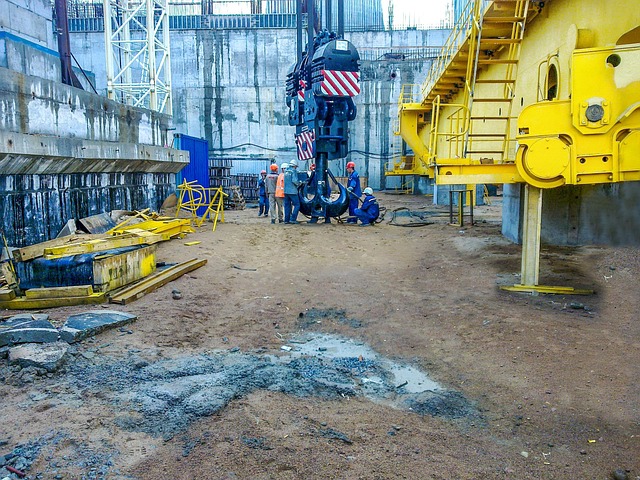Residential foundation repair is a significant but budget-friendly investment for homeowners addressing concrete foundation damage. Understanding root causes like ground movement, water intrusion, and settling helps in implementing effective strategies. Early identification of cracks, shifts, or dips through visual inspections and advanced technology is crucial. Cost-effective solutions such as epoxy injection and carbon fiber wraps stabilize foundations without breaking the bank. Professional services offer specialized knowledge, high-quality materials, and long-term stability, despite initial higher costs. Budget-friendly maintenance practices like crack filling and moisture management prevent minor issues from escalating into severe structural damage.
“Discover cost-effective solutions for repairing concrete foundations and save on your home’s structural integrity. This comprehensive guide addresses common causes of concrete foundation damage, from settlement to water intrusion. We’ll walk you through evaluating repair needs, exploring DIY vs professional options, and selecting budget-friendly materials. Learn about long-term maintenance strategies that prevent future issues and protect your investment in residential foundation repair.”
Understanding Common Causes of Concrete Foundation Damage

Concrete foundation damage is a common concern for homeowners, often requiring costly repairs. Understanding the root causes is the first step in preventing or mitigating such issues. One of the primary reasons for residential foundation repair is ground movement, which can be triggered by various factors like poor soil conditions, expansive clay, or uneven settlement. These movements exert immense pressure on the concrete structure, leading to cracks, heaves, and shifts that compromise its integrity.
Another significant cause is water intrusion. Over time, moisture can seep into the concrete, causing it to expand and contract. This cycle of hydration and dehydration weakens the foundation, especially in areas with high humidity or poor drainage. Settling and shifting due to weight accumulation, such as from poorly constructed or heavy buildings nearby, can also contribute to damage. Identifying these causes is crucial for effective and budget-friendly concrete foundation repair strategies.
Evaluating the Extent of Residential Foundation Repair Needed

When addressing residential foundation repair, evaluating the extent of damage is crucial. It’s essential to assess every crack, shift, or dip in your home’s foundation to determine the scope of work required. Start by inspecting visible signs like cracks in walls, uneven floors, or doors that stick. These can indicate structural issues that need professional attention. Next, consider any noticeable gaps around windows and doors, as these may signal settlement or shifting of the foundation.
Don’t overlook subtle symptoms, either; minor cracks might be early indicators of more severe problems. It’s important to remember that each residential foundation repair project is unique, so consulting with a trusted contractor who can provide an accurate assessment is vital. They will employ various methods—from visual inspections to advanced technology—to evaluate the condition of your home’s foundation and recommend budget-friendly solutions tailored to your needs.
Cost-Effective Solutions for Cracked Concrete Foundations

Cracked concrete foundations can be a common concern for homeowners, often leading to costly repairs or even structural damage if left unattended. Fortunately, there are several budget-friendly solutions to address these issues without breaking the bank. One effective approach is to use epoxy injection, which involves injecting a mixture of epoxy resin and hardener into the cracks to fill them and prevent further damage. This method is not only cost-efficient but also highly effective in stabilizing the foundation.
For smaller cracks, carbon fiber wraps offer an excellent alternative. These flexible, durable wraps are applied directly over the crack, providing structural support and preventing future damage. Carbon fiber wraps are lightweight, easy to install, and significantly more affordable than traditional repair methods. By opting for these cost-effective solutions, homeowners can effectively fix their residential foundation repair issues without incurring substantial expenses, ensuring a solid and stable base for years to come.
DIY vs Professional Foundation Repair: Which is Right for You?

When it comes to repairing a concrete foundation, homeowners often grapple with the choice between doing it themselves (DIY) or hiring professional contractors. While DIY methods can be budget-friendly and satisfying for some tasks, residential foundation repair is not typically one of them. Foundation issues often require specialized knowledge, equipment, and skills that are beyond the average homeowner’s capability.
Professional concrete foundation repair services offer several advantages. Experts can identify subtle signs of damage and provide lasting solutions tailored to your property’s unique needs. They have access to high-quality materials and advanced techniques, ensuring long-term stability and structural integrity. While professional services might come with a higher upfront cost, the expertise and peace of mind they offer could prevent more severe—and expensive—damage down the line, making it a wise investment for many homeowners.
Choosing the Most Budget-Friendly Concrete Repair Materials

When it comes to residential foundation repair, choosing budget-friendly materials can significantly impact your project’s cost and longevity. Concrete is a durable material, but over time, cracks, heaves, and settlement can occur, requiring repair. Opting for affordable yet high-quality repair compounds is key to saving money without compromising structural integrity.
One of the most cost-effective options is using epoxy injections or polyurethane foam. These materials are lightweight, easy to apply, and highly effective in sealing cracks, preventing further damage, and stabilizing the foundation. They offer excellent resistance to water and chemicals, making them ideal for various environmental conditions. Additionally, these compounds can be mixed and matched based on the repair’s specific needs, allowing you to tailor the solution to fit your budget without sacrificing quality.
Long-Term Savings Through Proper Foundation Maintenance

Investing in regular maintenance for your concrete foundation can lead to significant long-term savings. Many homeowners often overlook the importance of proper care, assuming it’s an additional expense. However, addressing minor issues early on prevents them from escalating into costly repairs or even structural damage down the line.
Residential foundation repair services can range from simple crack filling and sealing to more complex reinforcement techniques. By catching problems like cracks, settlement, or water intrusion at their nascent stages, you’ll avoid extensive (and pricier) renovations in the future. Proper maintenance not only extends the lifespan of your home’s foundation but also preserves its structural integrity, ensuring your investment remains secure.
Preventive Measures to Avoid Future Concrete Foundation Repairs

Regular maintenance is key to preventing future concrete foundation repairs. Homeowners can take several simple steps to ensure their home’s foundation remains stable. One of the most effective preventive measures is inspecting the foundation for any signs of damage, such as cracks, uneven surfaces, or water seepage, at least once a year. Addressing these issues promptly can prevent them from escalating and becoming costlier to repair.
Another crucial step is to manage moisture levels around the foundation. Water is one of the primary causes of concrete damage, so implementing measures like proper drainage systems, sealing cracks that might allow water intrusion, and ensuring downspouts direct away from the foundation can significantly reduce the risk of residential foundation repair. Regularly cleaning out gutters and checking for any blockages is also essential to maintain effective water flow.
